BACK
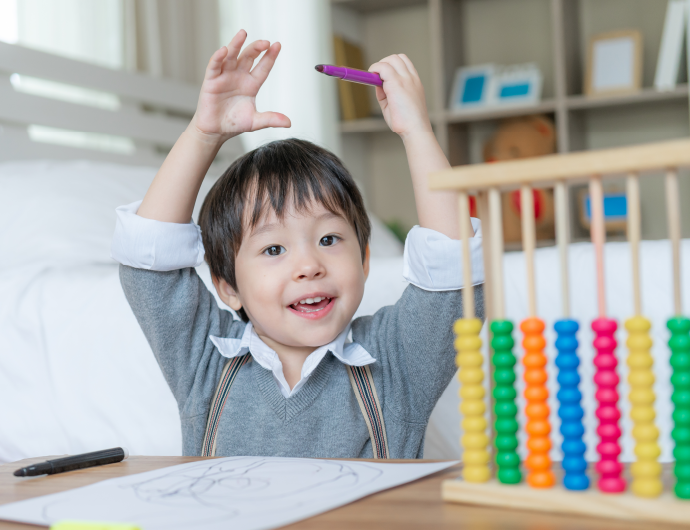
Learning to count is a major milestone in early childhood development. For preschoolers, counting helps them understand quantities, recognise patterns, and build problem-solving skills.
In Singapore, where early education values both academic and holistic growth, parents often seek ways to support numeracy through fun, everyday activities. At institutions like Little Skool House, a focus on hands-on learning ensures that children engage with numeracy in meaningful ways, enhancing their understanding and retention.
A playful approach to counting not only introduces children to numbers but also reinforces essential skills like number sense, sequencing, and critical thinking.
By incorporating these 12 enjoyable counting games into daily routines or playtime, you can help your child develop a strong foundation in numeracy while ensuring they have fun along the way.
Why Counting Skills Matter in the Preschool Years

Counting is much more than simply reciting numbers—it’s a foundational skill that supports a child’s cognitive development. In the preschool years, counting helps children grasp concepts like quantity, sequencing, and patterns, which are essential for problem-solving and mathematical reasoning.
Early childhood education plays a crucial role in fostering children’s mathematical skills through meaningful and contextually relevant learning experiences.
Children who develop a strong understanding of numbers early on tend to perform better in later years, not just in mathematics but in areas like critical thinking and logical reasoning, enhancing their problem-solving skills.
Indoor Counting Games for Preschoolers
When the weather isn’t ideal for outdoor play, there are plenty of indoor counting games that incorporate hands-on activities to keep your child engaged while helping them build essential numeracy skills.
These games turn everyday items into educational tools and provide an opportunity for meaningful play for kids within the home.
1. Count and Sort with Toys
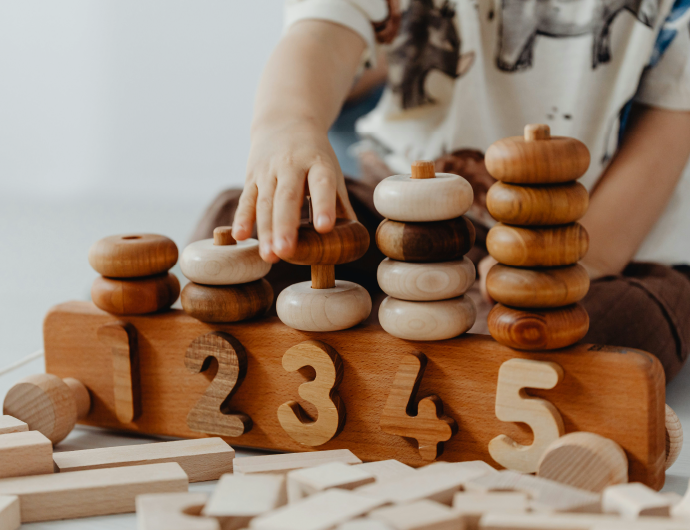
Use blocks, cars, or soft toys to help your child practice counting and sorting. Encourage them to group the toys by number or colour, and count them out loud. This simple activity promotes one-to-one correspondence, a key early maths skill.
Age Range: 2–4 years
How-To:
- Gather toys like blocks or stuffed animals.
- Sort them by colour, size, or type.
- Count each group aloud.
2. Number Treasure Hunt
Create a treasure hunt by hiding number cards around the house. Once your child finds a card, have them arrange the numbers in order or match them with a corresponding quantity of objects. This game reinforces number recognition and sequencing.
Age Range: 3–5 years
How-To:
- Hide number cards around the house.
- Ask your child to find them.
- Arrange the cards in order or match with objects.
3. Roll and Count Dice Game
Roll a dice and count the dots aloud. Then, encourage your child to act corresponding to the number rolled, such as jumping, clapping, or stomping. This adds an element of physical activity, making learning dynamic and fun.
Age Range: 2.5–5 years
How-To:
- Roll a die and count the dots together.
- Do actions (e.g., jump, clap) to match the number rolled.
4. Button Counting Board
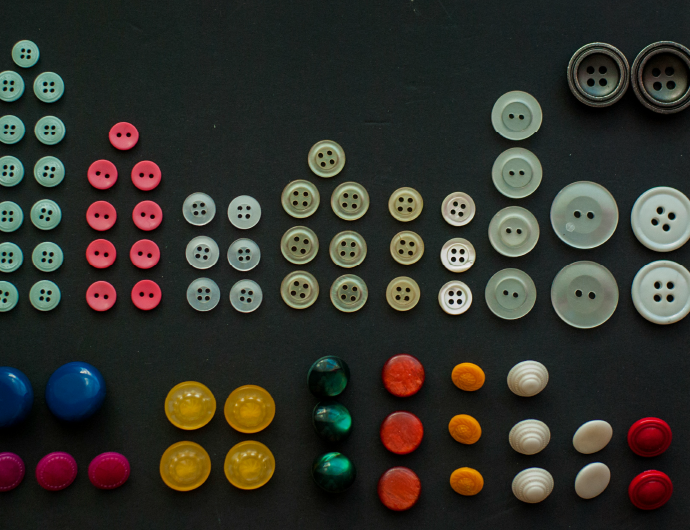
Take a muffin tin and some buttons (or similar small objects), and engage your child in hands-on learning by encouraging them to count how many buttons fit into each section of the tin. For an added challenge, ask them to match the number of buttons to a number card.
Age Range: 3–5 years
How-To:
- Give your child a muffin tin and buttons.
- Count how many buttons fit into each section.
- Match each group to a number card.
5. Counting with Beads and Thread
This is a wonderful activity for practising both counting and fine motor skills. Have your child string a specific number of beads onto a thread. As they count, they’ll also be developing hand-eye coordination and concentration.
Age Range: 3–5 years
How-To:
- Provide a string and coloured beads.
- Ask your child to thread a specific number of beads.
- Count aloud as they go.
6. Count the Sound Game
Make a fun game out of counting sounds that involve counting. Clap your hands or tap on a surface and have your child count how many sounds they hear. You can vary this by using different objects around the house to create different sound patterns.
Age Range: 2–4 years
How-To:
- Make sounds by clapping, tapping, or using objects.
- Let your child count each sound they hear.
- Repeat with different sounds or patterns.
Outdoor Counting Games for Preschoolers
Outdoor play is a fantastic opportunity to explore counting in active play, using the natural environment as a learning space. These games help children develop numeracy skills and engage their physical coordination, making learning fun and dynamic.
These outdoor games are exciting activities that captivate children’s interest and enhance their learning experience.
7. Nature Number Hunt

Take your child on a nature walk and encourage them to count the different objects they see, such as leaves, rocks, flowers, or birds. This activity helps children connect numeracy with the world around them and introduces them to simple counting in nature.
Age Range: 2.5–5 years
How-To:
- Go on a nature walk with your child.
- Count natural objects like rocks or leaves.
- Optional: Collect and sort them by type.
8. Jump and Count
Set up a course where your child has to jump from one point to another, counting each jump out loud. To increase the challenge, you can ask them to jump a specific number of times or jump in different patterns, promoting both physical and cognitive development.
This game keeps children interested and engaged while promoting both physical and cognitive development.
Age Range: 3–5 years
How-To:
- Create a path or course to jump along.
- Count each jump aloud.
- Add challenges like counting backwards or skipping numbers.
9. Counting with Chalk
On a sunny day, head outside with some sidewalk chalk. Draw large numbers or shapes on the pavement and ask your child to jump or step to the correct number when you call it out. This combines learning with physical movement, helping to reinforce number recognition.
You can also use paper to draw numbers or shapes for indoor play.
Age Range: 3–5 years
How-To:
- Draw large numbers or shapes on the pavement.
- Call out a number and have your child jump on it.
- Mix in movement games for added fun.
10. Count the Steps

Make counting part of your daily walk. As you walk together, count the steps out loud. You can make it more engaging by asking questions like “How many steps to the park?” or “Can we count how many steps to the bus stop?”
This activity helps children develop an understanding of numbers and quantities in a real-world context.
Age Range: 2.5–5 years
How-To:
- Count steps during walks or on staircases.
- Ask your child to guess how many steps to a location.
- Count together to check.
11. Ball Toss Counting
Play a simple ball toss game where your child counts the number of times they throw and catch the ball. For added challenge, they can aim to throw the ball a certain number of times without dropping it, integrating counting with motor skills.
Age Range: 3–5 years
How-To:
- Toss a ball or bean bag back and forth.
- Count how many successful throws or catches.
- Set goals to reach before a drop.
12. Counting Leaves
Encourage your child to collect leaves from different trees or plants in the park, and then count how many they have. To deepen the learning, ask them to sort the leaves by size, colour, or shape, and count how many fall into each category. Creating different categories for sorting leaves enhances their understanding of numbers and patterns.
Age Range: 3–5 years
How-To:
- Collect leaves of different shapes or sizes.
- Count how many your child has gathered.
- Sort and count by category (e.g., colour, size).
Additional Tips for Making Counting Fun and Meaningful
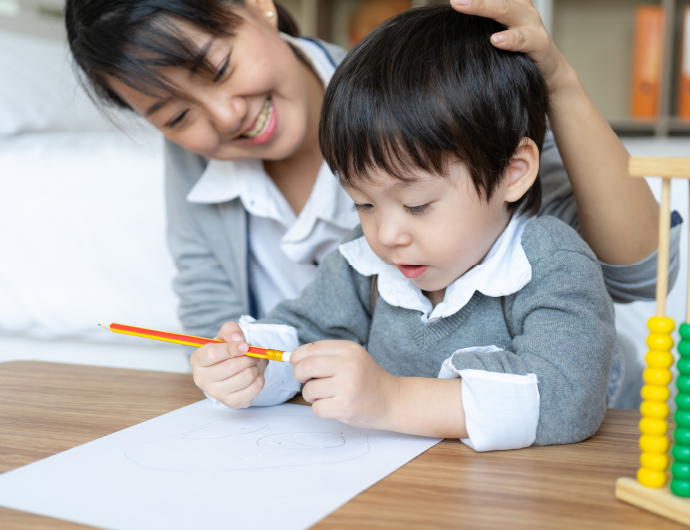
While counting games are a wonderful way to help preschoolers learn numeracy, there are a few tips that can make the experience even more engaging and meaningful for your child.
- Keep it Playful: Let Your Child Lead. Let your child guide the activity by choosing what to count and how. This builds confidence, independence, and a natural love for learning through play.
- Reinforce Learning Through Routine. Daily tasks like setting the table or tidying up offer simple opportunities to practise counting. These moments help children see how numbers fit into everyday life.
- Use Singaporean Context: Local Foods, Places, and Themes. Use familiar local elements—like buses, fruit stalls, or visits to the market—to make counting relatable and exciting. This strengthens numeracy skills while deepening their connection to Singapore’s culture and environment.
Where Early Numeracy Begins: Learning Beyond Play
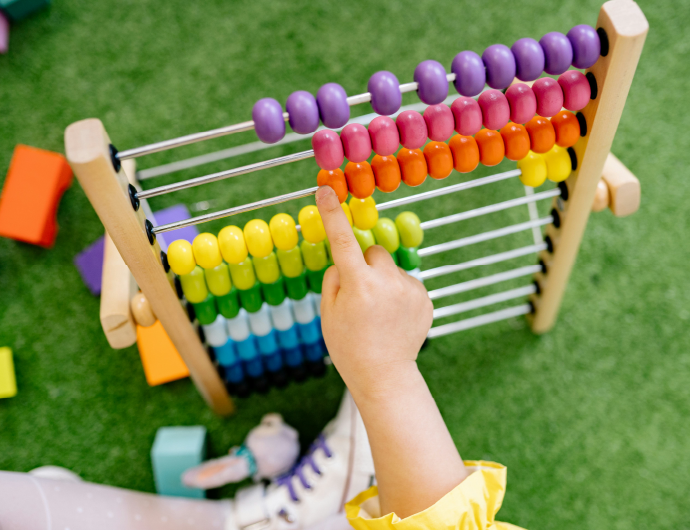
Counting games do more than entertain—they lay the groundwork for essential numeracy skills by helping young children understand numbers in a fun, meaningful way.
Through playful repetition, hands-on experiences, and everyday contexts, games naturally reinforce early mathematical concepts like quantity, sequence, and comparison.
At Little Skool House, we extend this playful approach into the classroom, recognising that meaningful learning happens when children are engaged, curious, and supported.
Our curriculum is thoughtfully designed to nurture numeracy through purposeful play, inquiry-based activities, and real-world applications, ensuring children not only learn to count but also learn to think.
By connecting learning at home with high-quality early education, we give children the confidence to explore numbers, solve problems, and develop a strong foundation that supports lifelong success.



